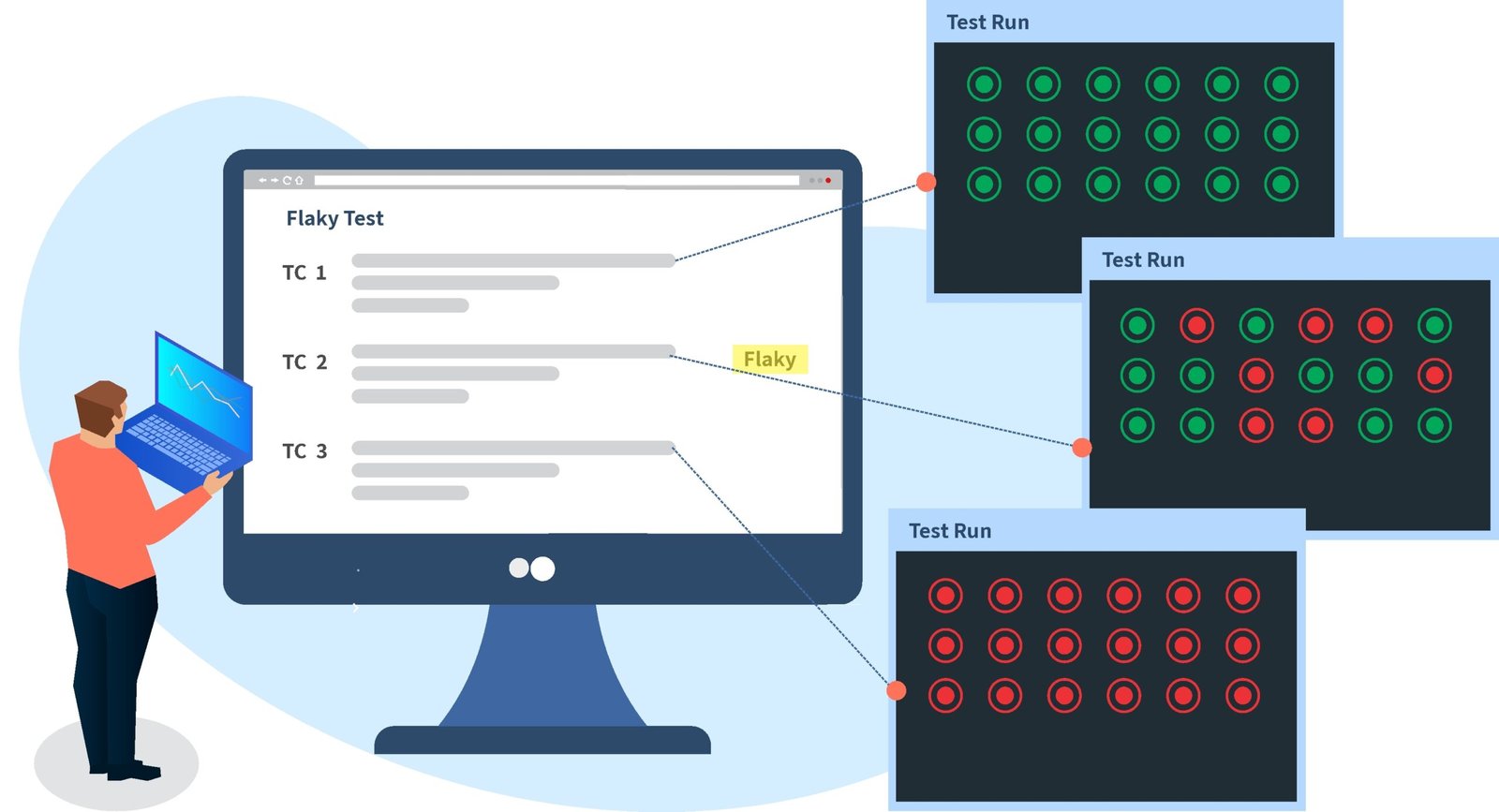It is the software testing where the developer should take care of the reliability and stability of his code. Nonetheless, developers repeatedly fail to eliminate a dreadful and challenging difficulty known as flaky test. These tests depict the activity that is either code running or not, which causes the testing process to be unreliable and hinders the progress of development. Nevertheless, don’t worry because the secret of the baking flaky test is right before your eyes. With the correct strategies and tactics, programmers could turn these hurdles into a piece of cake that they would have no trouble overcoming when compared to a regular professional.
Understanding Flaky Test
Flaky tests are the fugitive phantoms of the dev process, who stealthily haunt it with their unsteady behavior. These faults may be caused by several reasons like time and resource conflicts or environment dependencies. Broadening the scope of risk assessment and fixing all flakiness issues are the guidelines for an effective testing process.
1. Isolation and Determinism
The primary principle that must be upheld in the flaky tests resolves determinism. The objects of tests that are indifferent to the environment and other external influences are desirable. Achieving this, at the same time, requires isolating the tests from external dependencies such as network calls and system configurations, and accordingly well to establishing the test setups and teardowns.
2. Retry Mechanisms
Spending retry mechanisms can be a solution for flakiness in cases where the tests are not successful automatically. Nonetheless, what is most important is that the retry be applied judiciously and a reasonable threshold. It can set to curb a situation in which one would mask underlying issues or create more flakiness.
3. Logging and Diagnostics
Precise tracking along with comprehensive analysis are those tools that possess the aptitude to trace the cause of flaky tests. Thorough recording of crucial data like test execution times, issues, and errors with the exact state of the system. It shows the developers where the problem hides and they can come up with the targeted solutions.
4. Test Environment Stability
Taking into consideration the stability and consistency of the test environment is convenient for us to run the test successfully. This means going for standardizing hardware and software configurations. It taking proper care of inter-dependencies, and keeping out the external factors that would lead to variability.
How to do the Flaky test?
The introduction of proactive techniques and best practices blends with the prevention of flakiness and the creation of a testing culture dedicated to solidity and consistency at all levels.
1. Prioritize Test Refactoring
Strive to refresh and keep up with the refactoring of tests to reduce repetitive code, increase readability, and improve maintainability. Refactoring also raises hidden elements of flakiness and runs their test more effectively.
2. Embrace Test Design Principles
Some hints include the Arrange-Act-Assert pattern and Single Responsibility Principle. That is used to create test structures that can’t easily run into flakiness problems. There are many benefits to syntax that make debugging, maintenance, and troubleshooting rather easier.
3. Apply Member Interface and Runtime Checking
Implement within the test doubles mocking and stubbing frameworks. To imitate the next unit’s test dependencies and isolate the desirable ones. With de-coupling tests from external systems, developers are expecting to reduce flakiness. They will screen these tests for environmental factors or network variability (environmental factors or network variability screening).
4. Real-Time Monitoring and the Feedback
Set up a culture of continuous testing and feedback loops to spot flaky tests. Take timely action to solve the issues during development. With systems auto testing being integrated to alert and monitor mechanisms. The process can unveil test reliability information almost in real-time. This helps in fixing flakiness as soon as possible
Conclusion
As such, hard-to-test designs are strong opponents, but by deploying effective strategies and bulletproof mindsets, developers. It can go into the ring like buffed-up champions. Through the realization of the root causes of flakiness. The establishment of reputable managerial tactics, and cooperation of the measures that prevent testing from being flakey. Teams will build a strong cornerstone for a testing process that is stable and resilient. Flaky tests aren’t a tricky stream and taking a step wisely and working hard enough, you can easily crack this hard nut.
Also Read: Transformation To Bold Creation in Printing Through DTF Printers
